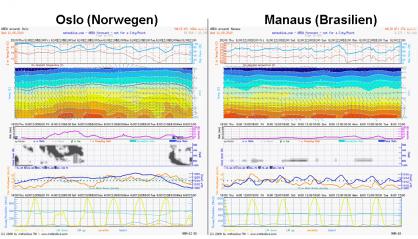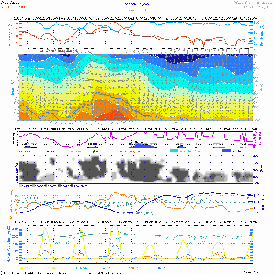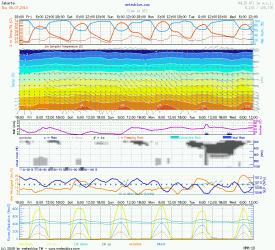Solar radiation
Solar radiation is the fuel that "moves" the weather. Almost all the energy
moving the atmosphere comes from the Sun.
The amount of sunlight and radiation reaching the Earth is different
depending on the latitude (North / South), the seasons and the day length.
The Sun does not shine in the same way everywhere on Earth; because of the inclination of the axis of the Earth to the Sun, the position and the angle of the Sun changes in the course of the year.
The Sun radiation at ground level changes very strongly between:
- day (high) and night (none);
- clear sky (high) and cloudy (low);
- summer (high) and winter (low);
- Equator (high) and poles (low).

On the right-hand side, you see two meteogrammes "AIR" (that show ground and air layers) of Oslo (Norway) and Manaus (Brazil) for comparison. The meteogrammes show the forecasts of the 12 August 2010. You can see the radiation in the lowest chart as a yellow curve. The maximum values of the radiation differentiate strongly. With higher solar altitude (Manaus), the radiation is higher as with a lower angle of insolation (Oslo).
Look at the meteogrammes, and note how the (yellow) curve of the radiation changes:
- Day and night;
- without and with clouds;
- in the summer and in the winter;
- in Switzerland (Basle, Zurich) and in the Tropics (Jakarta).






